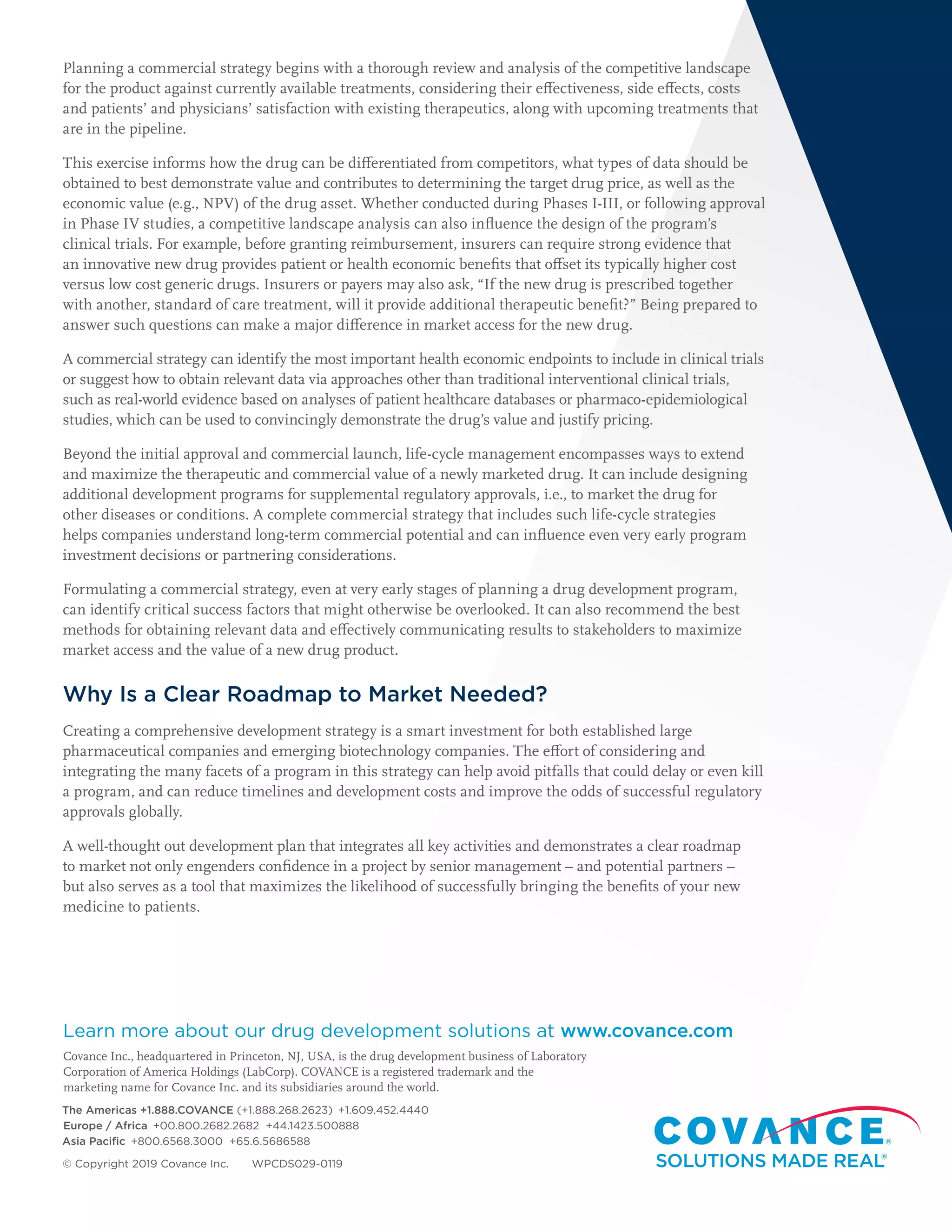The document outlines the importance of a comprehensive drug development strategy, highlighting that only about 10% of new compounds receive regulatory approval. It describes the multi-disciplinary effort required for successful drug development, with focus on creating a Target Product Profile (TPP), regulatory strategies, clinical trials, and commercial plans to address potential challenges and optimize the path to market. A well-integrated development plan not only streamlines processes but also helps in making informed investment decisions to ensure the successful launch of new medicines.





